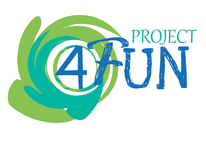4-FUN – Demonstration and exploitation of most promising prototypes and tool derived from European resarch actitivities
4-FUN is a 3-year Integrated Project (2002-2015) funded within the European 7th Framework Programme and involving 14 partners from 9 European countries.
The assessment of risks to human health from chemicals is of major concern for policy and industry and ultimately benefits all citizens. In this process, exposure assessment is generally considered to be the weakest point, as currently available tools show major flaws:
(a) lack of integrated approach for assessment of combined stressors (i.e. a number of potential pollutants);
(b) widespread use of worst-case scenarios leading to over-conservative results;
(c) lack of uncertainty/sensitivity tools that allow identifying the important exposure drivers.
To overcome these drawbacks, the FP6 project 2-FUN produced prototype software containing a library of models for exposure assessment, coupling environmental multimedia and pharmacokinetic models. The objective of the 4FUN project is to further improve and standardise the 2-FUN tool and guarantee its long term technical and economic viability. Stakeholder requirements will be identified and an analysis of the strengths, weaknesses, opportunities and threats (SWOT) of existing exposure assessment tools (including 2-FUN) will be conducted. The 2-FUN tool will be subject to a rigorous standardisation which includes verification, benchmarking, documentation and demonstration. To demonstrate the reliability of modelling estimations and the feasibility of building complex realistic scenarios, case studies based on actual datasets will be performed. Improved and standardised 2-FUN software will be delivered, together with supporting documentation and training courses.
Finally, based on detailed market research a sustainable business model will be developed. Improved exposure assessment due to the project will
(a) reinforce competitiveness by avoiding overregulation;
(b) prevent excessive adverse human health effects due to underregulation;
(c) contribute to the promotion of sustainable products/technologies;
(d) lead to homogeneous integration of exposure health concerns across the policy spectrum at the Community level.
